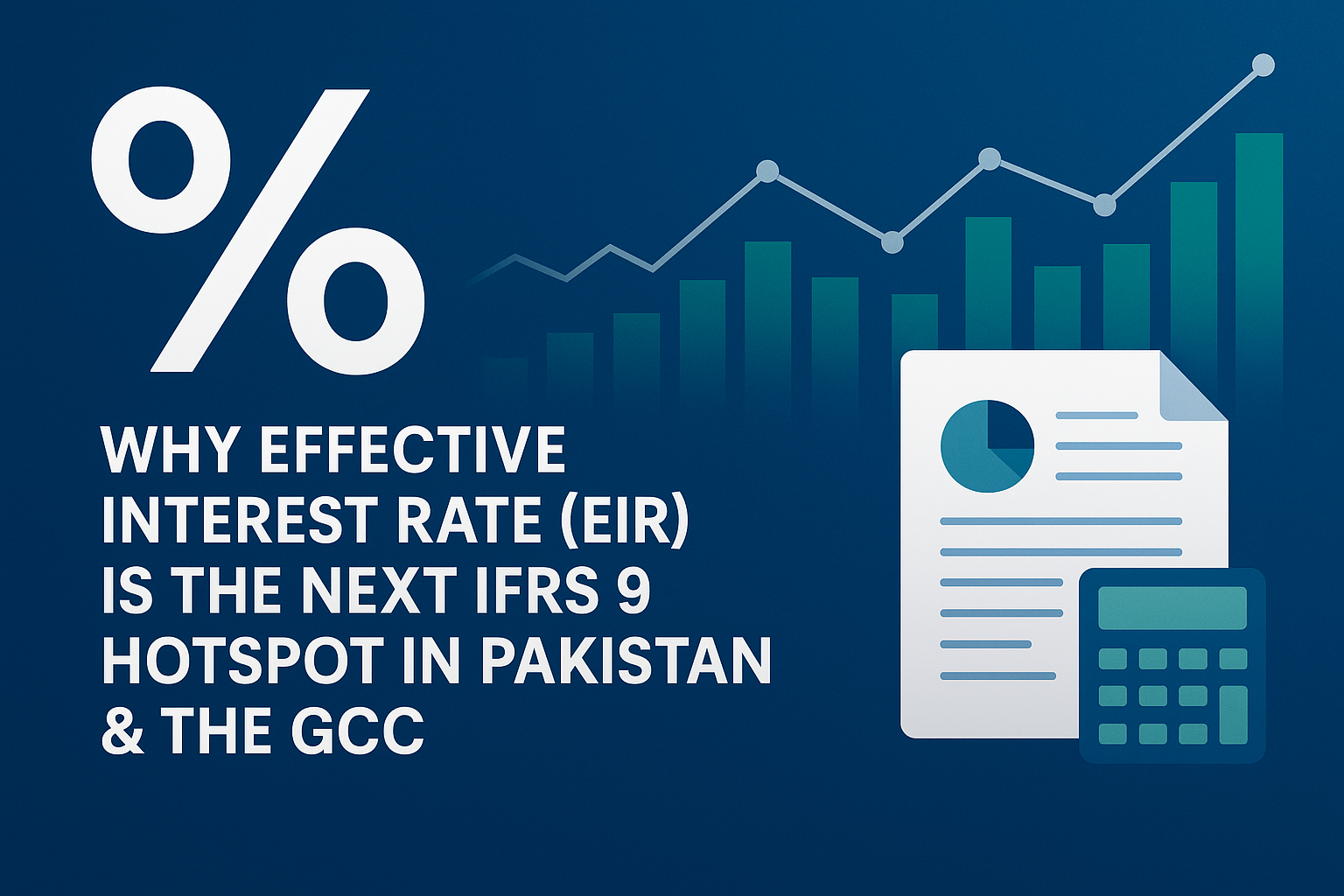1. The Rising Regulatory Focus
Over the last few years, both the State Bank of Pakistan (SBP) and GCC regulators have been tightening their supervision around IFRS 9. Among the many technical areas under review, one topic is coming up again and again during audits: Effective Interest Rate (EIR).
EIR is more than just a formula — it’s the method that ensures the present value of contractual cash flows (including fees, transaction costs, and other features) matches the gross carrying amount at the point of initial recognition.
This means it plays a direct role in how interest income is recognized and, ultimately, how financial statements reflect reality.
2. The Gap Between Theory and Practice
Here’s the uncomfortable truth — many banks and financial institutions think they are IFRS 9 software on EIR, but in reality:
- Flat coupon rates are still being used for accruals.
- Prepayments and fee adjustments are ignored or handled via spreadsheets.
- Islamic banking products are treated with generic interest models instead of Shariah-aligned EIR.
- Audit trails are patchy, making it difficult to prove accuracy to regulators.
Result: misstated interest income, regulatory findings, and lengthy audit disputes.
3. The Islamic Banking Challenge
For GCC Islamic banks, the complexity is doubled:
Shariah-compliant contracts (Murabaha, Ijarah, Diminishing Musharakah) require a tailored EIR approach.
Most off-the-shelf systems either lack the flexibility to handle these products correctly or require expensive, time-consuming customisation.
4. The SBP Stand in Pakistan
In Pakistan, the SBP has been explicit — EIR isn’t optional.
Banks are expected to calculate interest income strictly in line with IFRS 9, integrating fees, transaction costs, and prepayment behaviour into the model.
Non-compliance can result in negative inspection reports, reputational damage, and even monetary penalties.
5. A Quick Self-Check
If you’re unsure about your EIR readiness, ask yourself:
- Are all contractual fees and transaction costs part of your calculation?
- Can your system handle variable rate resets without manual intervention?
- Are Islamic finance products treated both in line with Shariah and IFRS 9?
- Is there a fully automated audit trail for every EIR calculation?
- Is your EIR output integrated directly with your Expected Credit Loss (ECL) model?
If you answered No or Not sure to any of the above, there’s a compliance gap waiting to be discovered — and regulators won’t wait for you to fix it.
6. What Leading Banks Are Doing
Forward-thinking institutions in PK & GCC are already:
- Moving away from spreadsheets and manual workarounds.
- Implementing automated EIR modules within their core systems.
- Aligning Islamic product structures with IFRS 9 from day one.
- Linking EIR outputs directly with ECL models for audit-ready reporting.
7. Real-World Case: Closing the Gap in 6 Weeks
One mid-sized GCC bank recently faced significant EIR-related findings during an audit.
By implementing an automated EIR solution that integrated directly with their core banking system and Islamic product modules, they:
- Eliminated 95% of manual adjustments.
- Cut audit response time by 70%.
- Achieved regulator sign-off in the next inspection — all within six weeks.
8. Final Word
EIR is no longer a “back-office accounting detail.”
It’s a strategic compliance area that affects your financial performance, regulatory standing, and audit outcomes.
Ignoring it isn’t just risky — it’s expensive.
If you’re looking for a future-proof, regulator-ready, Shariah-compliant EIR framework, start now.
The earlier you close the gap, the less it costs in penalties, audit time, and operational headaches.
